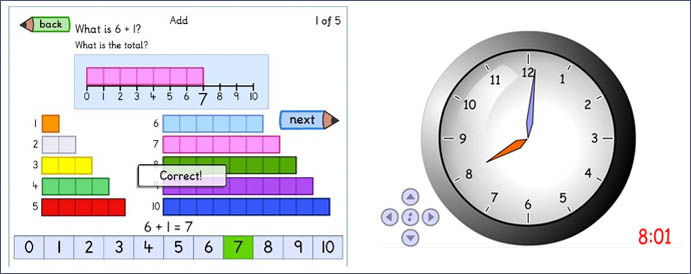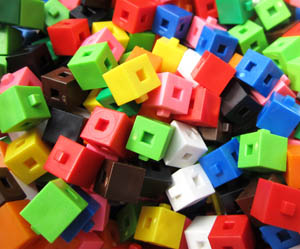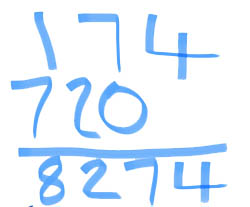Our websites:

It is quite common for people with dyslexia to have other specific learning difficulties. These co-occurring difficulties or co-morbidities include dyscalculia, a neurodevelopmental learning difference which causes difficulty in understanding number and number processes. (Scottish Working Definition of Dyscalculia 2022)
It should be noted that some people have difficulties with maths and arithmetic, which are not necessarily related to dyscalculia.
Learners with dyscalculia may:
There is a new toolkit designed by IOE (UCL's Faculty of Education and Society) to help teachers and parents to identify dyscalculia called ADD UP (Awareness of Developmental Dyscalculia and Mathematical Difficulties toolkit). Their top tips for supporting learners with dyscalculia include:
There are many way that technology can be used creatively to take forward these supportive tips. For example, when looking at a list of word problems we can 'cover all the other items, remove irrelevant pictures' by using Immersive Reader Line Ruler tool in Microsoft Word to focus on one question at a time.

This technology numbers /maths checklist (see below) is designed to help pupils and staff identify and explore technology to help address specific needs arising from dyslexia/dyscalculia.
It starts with each of the challenges listed in the Pupil Checklist for Dyslexia available on the Addressing Dyslexia Toolkit and suggests some strategies and tools to explore and evaluate.
The tools suggested are mostly freely available or via your Glow log-in so everyone in a Scottish state school should be able to access them. There are separate links to each of the most popular devices in the columns: Windows, Chromebooks (ChromeOS) and iPad (iOS).
These are 'universal' supports. They may or may not be the best tools to meet your own needs - apps and resources that you pay for may be better - but this should help you to get started with technology.
Download the technology numbers/maths checklist in Word format
Download the technology numbers/maths checklist in PDF format
Technology - in conjunction with other strategies - can help to address the support needs of the dyscalculic learner. These may be the same assistive technologies that can benefit the dyslexic learner too. For example, if reading text in a novel is problematic then it stands to reason that reading a maths problem in a text book is a barrier to the learner. In this scenario, text to speech software would enable the text to be read out loud using a computer voice.
The TeeJay and Heinemann Scottish Primary maths books are available for Scottish pupils with print disabilities from the Books for All Scotland database.

Most text to speech readers don't read mathematical expressions correctly, e.g. will generally be read as "(letter) X 2", rather than "X2", which can be confusing. Text to speech is still very useful for word-based problems.
If you do need to have the expression read by your device, try Equatio or type your mathematics with the Microsoft Equation Editor, which can be read it with Immersive Reader, like this:

Other technology solutions to make the reading of maths problems easier for someone with dyslexia and dyscalculia include:
Most people find it easiest to write number and mathematical expressions using a pencil or pen (either paper or touch screen) because it's simplest faster and allows greater freedom and fluency. However, some people reverse numbers or find it hard to write numbers or layout calculations neatly and using technology may help with these challenges.
CALL has created templates to help when typing calculations. They look like this:
.png)
and are available to download as Word calculation templates and PDF calculation templates.
Useful apps for writing calculations on iPad are ModMath (see below) and Math Paper.
Tools for writing mathematics and scientific expressions include:
There are a number of auto-solving maths apps such as MyScript calculator app (£2.99) which can be used by the learner to write out a sum and the app produces the answer in real time. The learner has to be able to write the numerals and the mathematical operations in a clear form that is recognised by the app. This app can allow learners to get the answer to a sum that they would not be able to do with independent working. Good use of the app can be in mixed ability group settings with the learner using the app to confirm the workings of other group members. It can be used for practice of times tables by erasing the number and writing the next one e.g. 4 x 5 = then rub out the 5 and write '6' for the next sum and so forth. Shona in Case Study 1 below uses the MyScript calculator for support.
Older learners working on algebraic equations can use an auto-solving maths app such as PhotoMath. This app uses the camera on the device to take a photo of a handwritten equation (or you can type it in) and it will give you the answer. The most important feature is that you are then able to see a breakdown of the solving steps and learn from that.


Photomath is also available on Chromebooks too and the app rates as the number one app in the Guardian list of Best Maths apps for Chromebooks (2021).
Digital graph paper with large squares can make plotting graphs easier than drawing on paper. QTVI teacher Sarah Hughes has a free graph paper generator on her website which allows you to customise graph paper for downloading or saving as a pdf for further editing.
On the iPad you can create graph paper in the Notes app by starting a new note, tapping on the three dot in the top right hand corner and choosing Lines and Grids. There is even a Ruler tool you can use for measuring. Having all these tools on hand within one app makes it extremely user friendly.
OneNote digital notebooks are an excellent way for learners with ASN to help with organisation of curricular resources. Everything automatically saves and syncs to work done at school can be then accessed at home on a different device. For learners with numeracy difficulties, they can set up a section of the notebook for Maths Support and have a page for each reminder e.g.
Within each page you could embed support videos or links to online games for practice activities.
The video above shows the main math tools:
Here are some examples of good websites with maths activities to support the learners with numeracy difficulties:


The wheel attempts to identify apps that will help to embed numerical learning and to give opportunities for repeated practice of concepts that cause difficulty.
The categories in the outer rim align with the Scottish Curriculum for Excellence Benchmarks for Numeracy and Mathematics with the addition of an 'Other Maths Tools' category. If you use the electronic version of the poster, clicking on the individual app names or icons will take you to the appropriate page of the Apple App store to get information on each app.
Download the iPad Apps for Learners with Dyscalculia/Numeracy Difficulties
David, a Primary 3 struggles with all aspects of early numeracy. He is unable to make 1:1 correspondence when counting concrete objects and cannot make an estimation of how many counters are in a pile on the desk. He is provided with manipulatives (cubes, cars, pencils) to provide a concrete, visible model that will support him to solve problems and develop concepts.

Computers, mobile devices, touch screen tablets and smartphones are engaging and motivating. For learners struggling with basic numeracy these devices can be used to access activities, software, apps and games that can support the concepts they are trying to grasp. For David, using technology for maths activities is a fun experience and reduces his levels of anxiety and has boosted his self esteem.
An important feature of David's learning journey is the use of technology alongside the use of concrete materials. The iPad activities can reinforce numerical concepts but it is essential to know that he is gaining transferable skills. When using the Number Frames app, the teacher had a similar grid created on laminated paper and used either small blocks or coloured discs to re-create the number patterns.

Shona, a conscientious S2 student, has been diagnosed with dysgraphia in addition to dyscalculia. Despite putting in a lot of effort, her writing output - specifically the laying out work in maths - can be disorganised which causes her further difficulties with calculations. Writing requires a complex set of fine motor and language processing skills - the mind of a dyslexic / dyscalculic learner can easily be overloaded.
Correctly laying out the numbers in a sum is vital to ensure the calculation is done correctly.
This is Shona's handwritten maths homework:

Using technology to support Shona carry out this task will allow her a good chance of making the correct calculation. This is the same sum laid out using the iOS Mod Math app.

Callum has difficulty remembering basic maths fact such as multiplication tables. He used to refer to posters round the classroom in primary school but now in high school he may be required to do a multiplication sum in a class where he does not have visual support.

The Support for Learning department had allocated some of their budget to buy IDL Numeracy software resource. One study found that using a self-paced computer-based maths program led to improvements in basic arithmetic skills in students with dyscalculia.
What supports can be provided to learners with dysgraphia using digital exam papers?
Learners who have difficulty writing and recording maths due to difficulties with handwriting and drawing can use technology in examinations and assessments. In Paul's blog, Writing maths on computers in assessments, he discusses the use of FX Equation and Efofex to help write equations.
Once a month we'll send you an email with news, research and thoughts, as well as training courses and free webinars you may wish to attend.
Our social media sites - YouTube, Twitter and Facebook